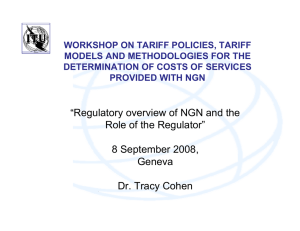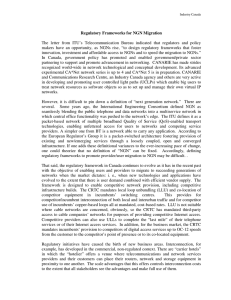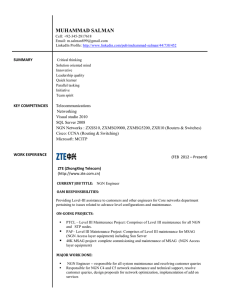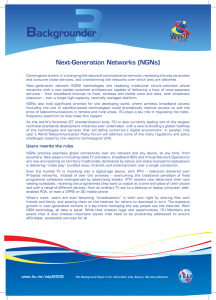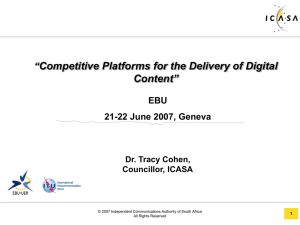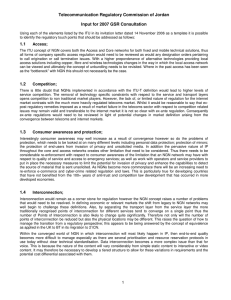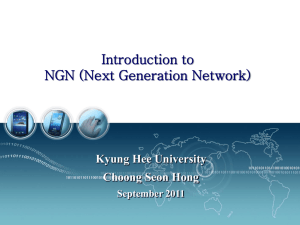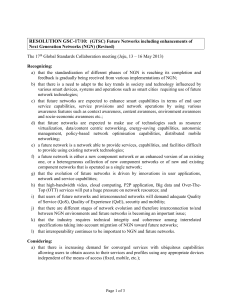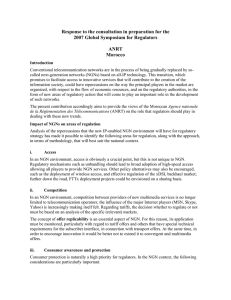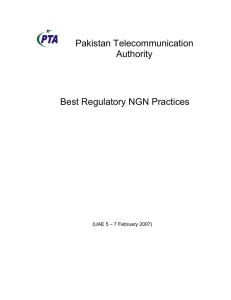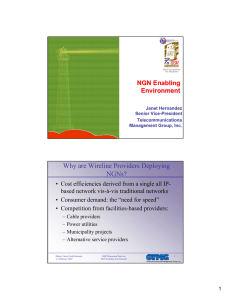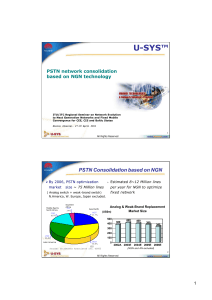Next - Generation Networks (NGN)
advertisement
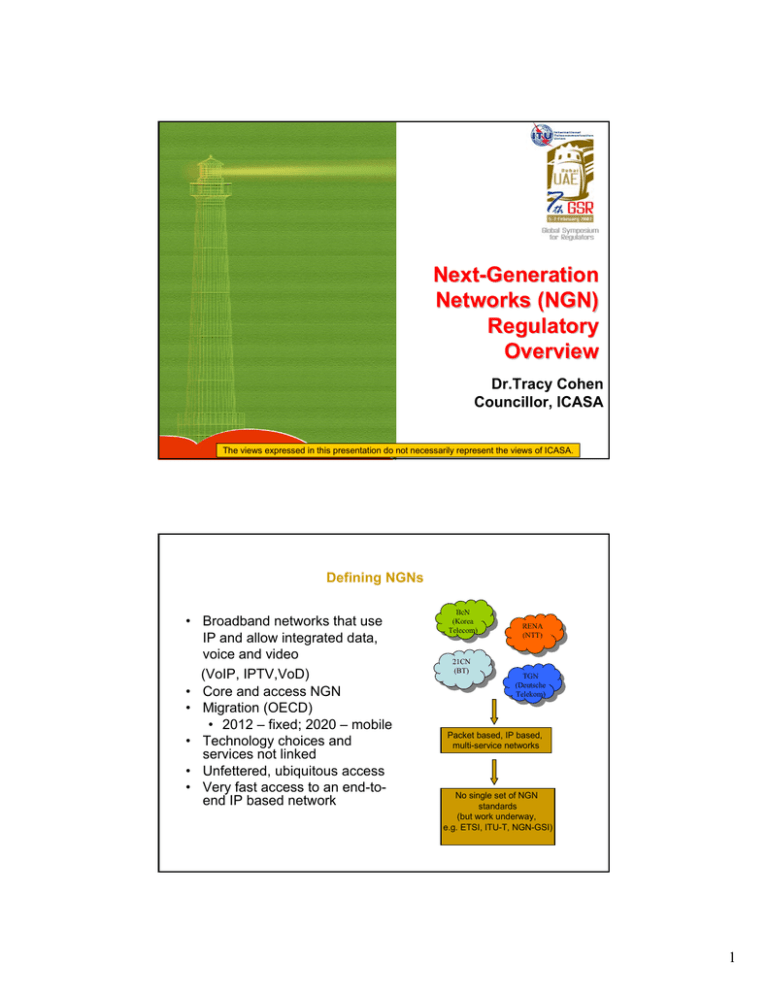
Next-Generation Networks (NGN) Regulatory Overview Dr.Tracy Cohen Councillor, ICASA The views expressed in this presentation do not necessarily represent the views of ICASA. Defining NGNs • Broadband networks that use IP and allow integrated data, voice and video (VoIP, IPTV,VoD) • Core and access NGN • Migration (OECD) • 2012 – fixed; 2020 – mobile • Technology choices and services not linked • Unfettered, ubiquitous access • Very fast access to an end-toend IP based network BcN BcN (Korea (Korea Telecom) Telecom) 21CN 21CN (BT) (BT) RENA RENA (NTT) (NTT) TGN TGN (Deutsche (Deutsche Telekom) Telekom) Packet based, IP based, multi-service networks No single set of NGN standards (but work underway, e.g. ETSI, ITU-T, NGN-GSI) 1 Extracting Essentials • Possible co-existence of regulatory approaches for PSTN and IP-based networks • What regulatory approach? • New? Legacy? Hybrid model? • An opportunity to review (and where necessary) remedy the regulatory framework • New technology, old regulatory challenges • NGN development linked to national broadband policy • NGNs in developing and developed countries • Affordability and access • Degree of competition • Pace and manner of reform NGN Drivers Operators Reduce costs; increase revenue; increase productivity; operational efficiency; diversity of offerings; increased competition; redundant legacy equip; consumer demand… End Users High end, innovative, evolving services supported by large bandwidth capacity; multiplay; broadband Internet; TV; mobile services; telephony, pricing; mobility… New Entrants Reduce costs; increase revenue; operational efficiency; diversity of offerings; increased competition; consumer demand; investment decisions… Technological innovation; Convergence; legacy equipment replacement; mobility, structural market changes; changes in services and user needs; equipment manufacturing 2 NGN Challenges Operators Integrity and cost of equipment; ROI concerns for existing investments; Uncertainty - technology specifics; take-up; demand; managing competition from the Internet and new entrants; QoS; regulatory risk End Users New Entrants Degree/intensity of competition between layers; integrity and cost of equipment; uncertainty; market dominance; take-up; demand; walled gardens; managing competition from incumbents; QoS; costs of compliance; regulatory risk Consumer issues; Interoperability; Quality of service (QoS); access and affordability: Supply; privacy; security Regulatory Approach What/who to regulate? Market Power/ dominance ? Timing Sequencing Emerging services/ markets Investment Regulatory Instruments? 3 Implementation • No framework for NGNs • Current principles aimed at circuit switched space • Different country contexts will inform • Clear rules required • Recognise convergence • Balanced and proportional regulation • • • • • • • • Competition Interconnection Universal service and access Standards and interoperability Licensing Numbering Spectrum assignment Consumer protection CONSULTATION CONSULTATION e.g. e.g.“NGN “NGNco” co”- -UK UK “NGN “NGNeCo”eCo”-India India Recommendations • • • • • • • • • • • • • Start thinking about processes and consult widely Facilitate competition and growth in services Encourage competitive market based outcomes Monitor market power in new services/markets Traditional PSTN approach is futile Technology and service agnostic approach, unified licencing Pursue universal service goals efficiently Educate consumers and ensure participation Maintain PSTN operation and legacy PSTN until full migration Create reasonable certainty for the sector Explore co and self-regulation options Balance roles of regulator and market Plan, time and sequence reform optimally 4 SHUKRAN Dr. Tracy Cohen tcohen@icasa.org.za 5
